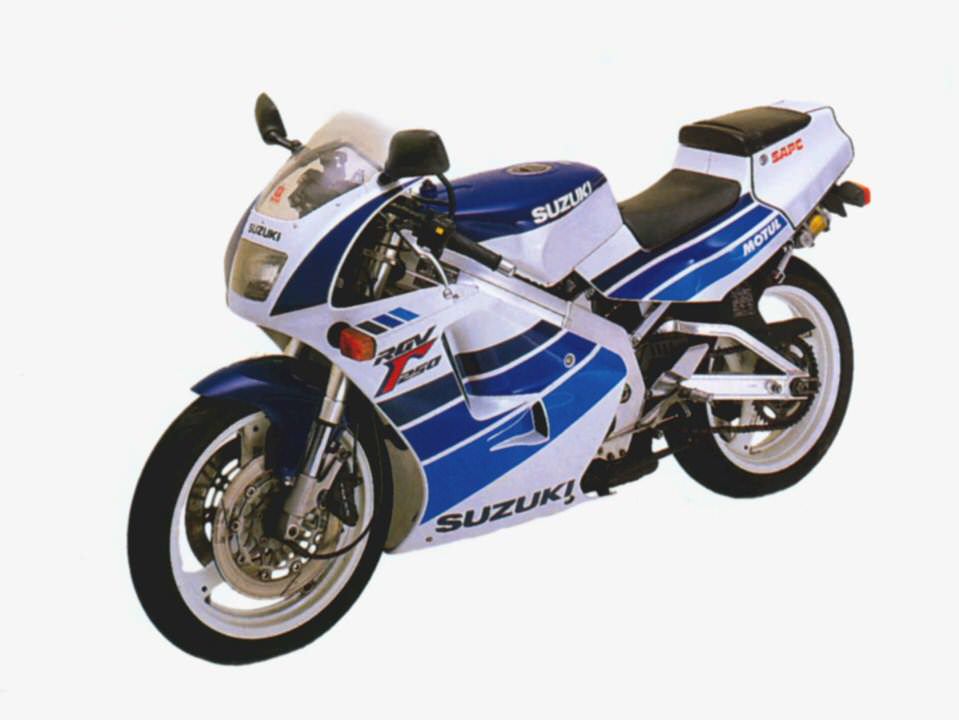
Contents
Introduction
The RGV250 Γ (Gamma) is a high performance sports bike which had a great number of its features and design clues based on the Grand Prix technologies and ideas of that time. It is a race-replica based on Suzuki ‘s 250cc Grand Prix motorcycles bikes from 1987 to 1998. The motorcycle incorporates many features taken directly from Team Suzuki’s Grand Prix winning RGV Gamma V-4 racer.
This motorcycle replaced the popular RG250 Gamma which employed an alloy frame with a Two stroke parallel twin engine. The bike produced over 50 bhp in a narrow power band between 8,000 to 11,000 Revolutions per minute . Weighing in at 128 kg (282 lb) (1989) to around 140 kg (309 lb) (later models) dry weight, this motorcycle has an excellent Power to weight ratio, with good acceleration and sleek aerodynamic producing a relatively high top speed.
The top speed of a standard RGV250 is around 130 mph (209 km/h) when ridden by an average weight person. It has a 0-60 mph (97 km/h) time of around 3.7 seconds, again, when ridden by an average weight person.
This motorcycle’s engine performance is not very inspiring at engine speeds under 6,000 rpm, due to the Two stroke engine power delivery of a relatively narrow Power band . However, once the engine is revved over 7,000 rpm, the power delivery characeristics transform the from a street bike to a pure bred track sports bike.
Due to its light weight, engine characteristics and cornering capabilities, it is particularly suited to the track, compared to other motorcycles of similar engine capacity.
Model Designation and Power
All RGV250 models, with the exception of the Japanese domestic market’s version (restricted to 40hp), make 50+ hp. The model designations are:
VJ21:1988-1990: quoted power; 1988=58hp, 1989=59hp (90° V-Twin, i.e. the space between the cylinders)
VJ22:1991-1996: quoted power; 1991=62hp (revised engine with more power, still 90° V-Twin)
VJ23:1997-1998: quoted power; 1997=70hp (from the very special ‘SP’ model (sports production) with new 70° V-Twin engine)
Technical
The VJ21 was the first RGV250 production Motorcycle available in Japan in 1988. Technical aspects were:-
Alloy Beam frame
90 degree, water cooled two cylinder Two stroke V-Twin style V engine (separate crankases, single in-line Crankshaft )
2 piece exhaust valves which have two positions – open and closed
Dual Reed valve . with Suzuki Intake Pulse Control system (SIPC), similar to Yamaha Energy Induction System (YEIS) but avoids patent issues
32 mm Mikuni Carburettor on 88/89 models, replaced with 34 mm models with single air bleed on 1990 model
17 front, 18 rear three spoke alloy wheels with twin 296 mm front Disc brake and single rear
Front suspension is conventional 41 mm damper type telescopic Motorcycle fork (not cartridge)
Suzuki Pointless Electronic Ignition (PEI) analogue Ignition system on 1988 models, replaced with digital system on 1989/90 models which was a predecessor to the SAPC as fitted on the VJ22
Dual, side-by-side expansion chambers
The VJ22 machine relied heavily on the VJ21, but had the following improvements:-
Suzuki Advanced Power Control (SAPC) computerized engine management system
3 piece exhaust valves with three positions – closed, half open and fully open
34 mm Mikuni Carburettor with dual air bleed system
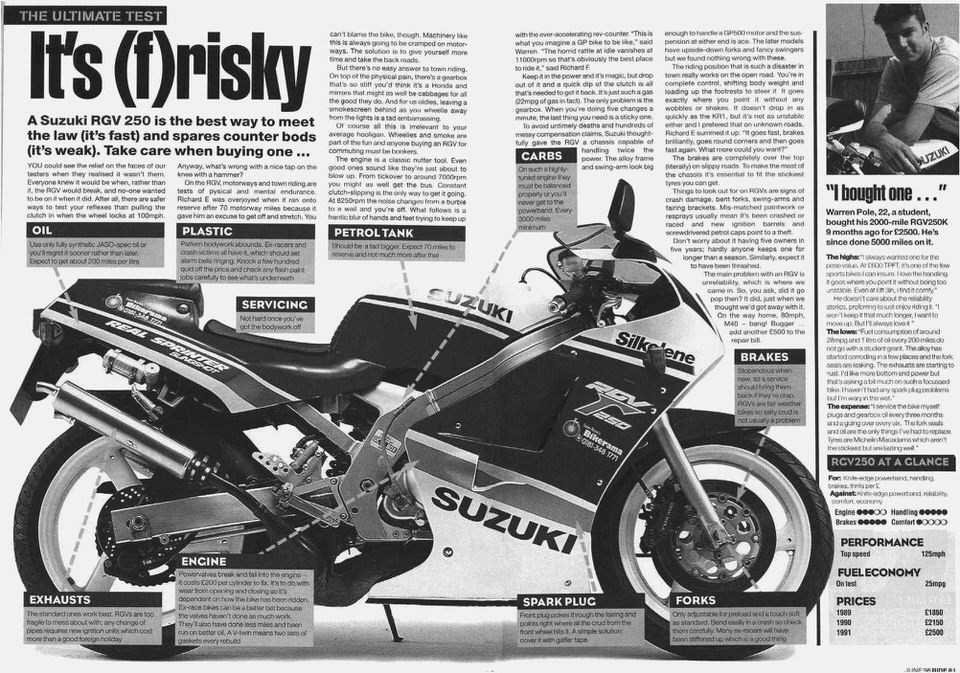
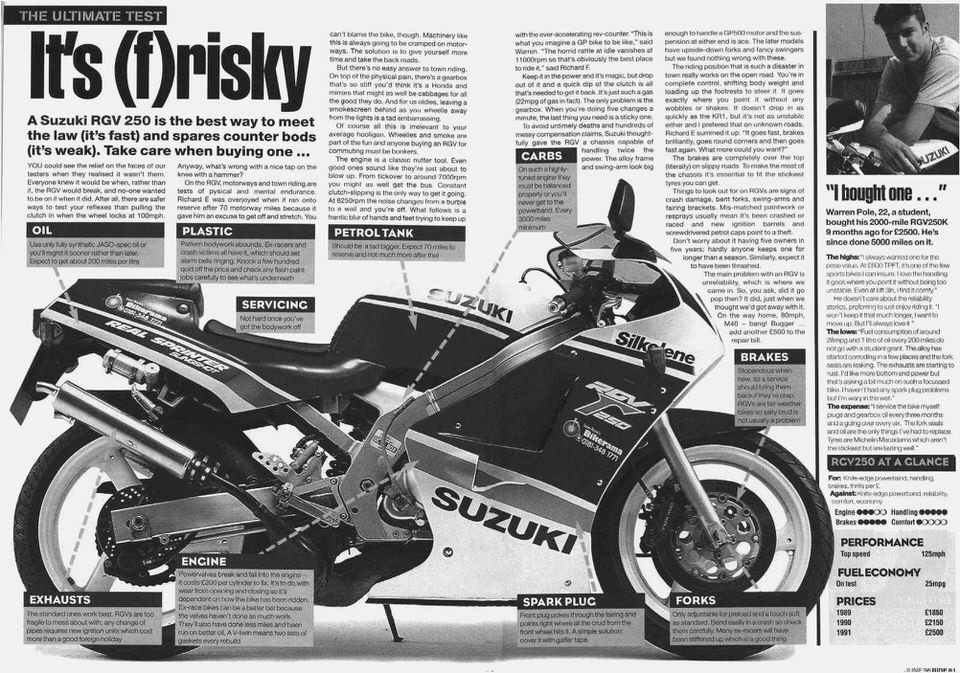
41 mm inverted cartridge type telescopic Motorcycle fork
modified swing arm fitted to permit both expansion chambers to be routed on the right hand side
17 rear wheel
310 mm front discs
In addition, a restricted VJ22 model was available in Japan as Sports Production (SP) model, which came with dry Clutch and Close-ratio gearbox as standard. A later SPII model reverted to standard wide ratio gearbox with dry Clutch .
The VJ23 uses a totally redesigned Engine with few interchangeable parts with the early models, and has a dry Clutch and Close-ratio gearbox as standard.
Reception
In the UK, the motorcycle press responded favourably to the VJ21. However, the initial VJ22 models had a design flaw in the ‘improved’ 3 piece exhaust valves. This was corrected on later VJ22 models, but still needs to be inspected regularly.
The VJ23 is not known to have powervalve issues.
Riding Experience
These motorcycles are not particularly suited to carrying pillion passengers on long rides, due to its race orientated design, detracting from comfort. Hence, touring is also not a strong point of this model. In straight line acceleration, the RGV250 is faster than most other 250cc two stroke and four stroke motorcycles, including the RG250, TZR250, NSR250, Kr1, Kr1-S, FZR250, CBR250RR, GSXR250, ZX250R, Hyosung 250GT and CB250.
The Aprilia RS250 is related and uses a modified RGV250 VJ22 (90° 2-Stroke V-Twin) engine.
Aprilia bought engines from Suzuki (which were fitted with Aprilia branded castings on the timing and clutch covers), then fit their own expansion chambers, barrels and ECU. There were also external differences in the cylinder head castings, but no internal differences have been noted.
Production of the Aprilia RS250 is thought to have ceased in 2003, with end of engine production by Suzuki.
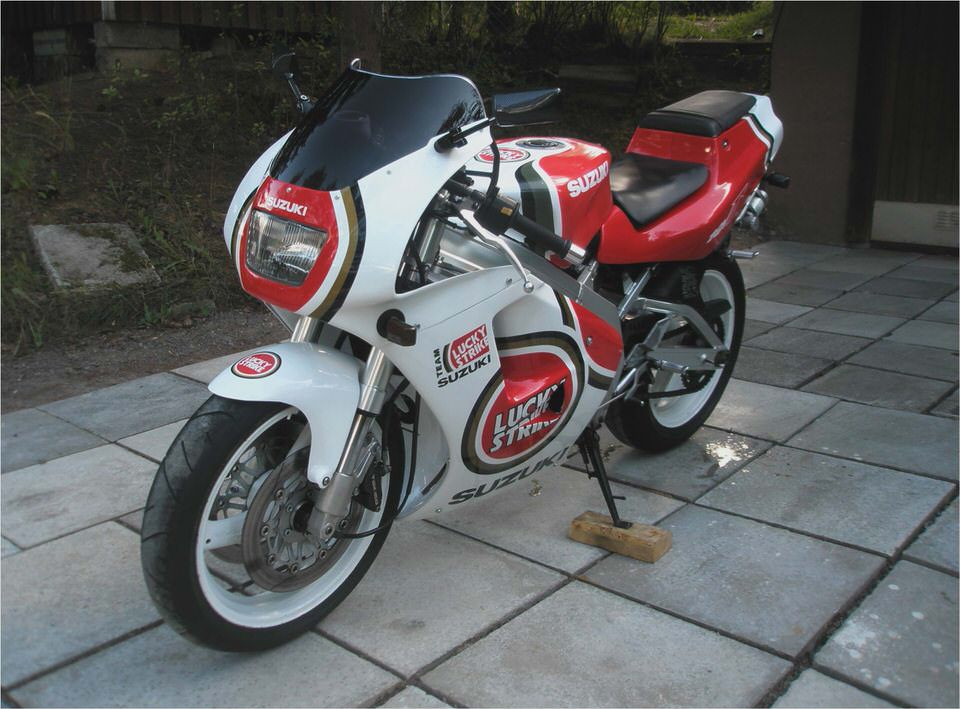
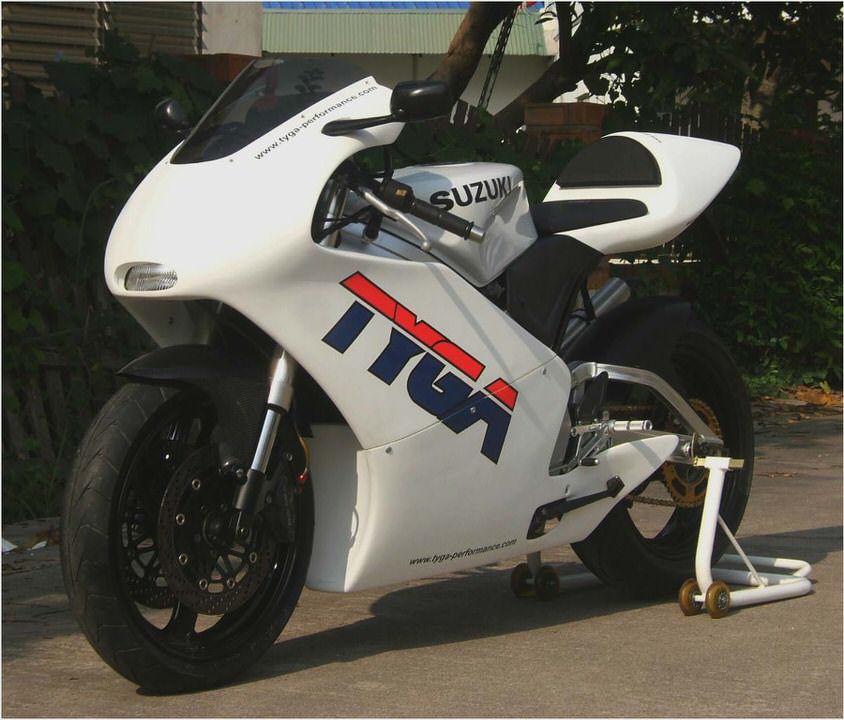
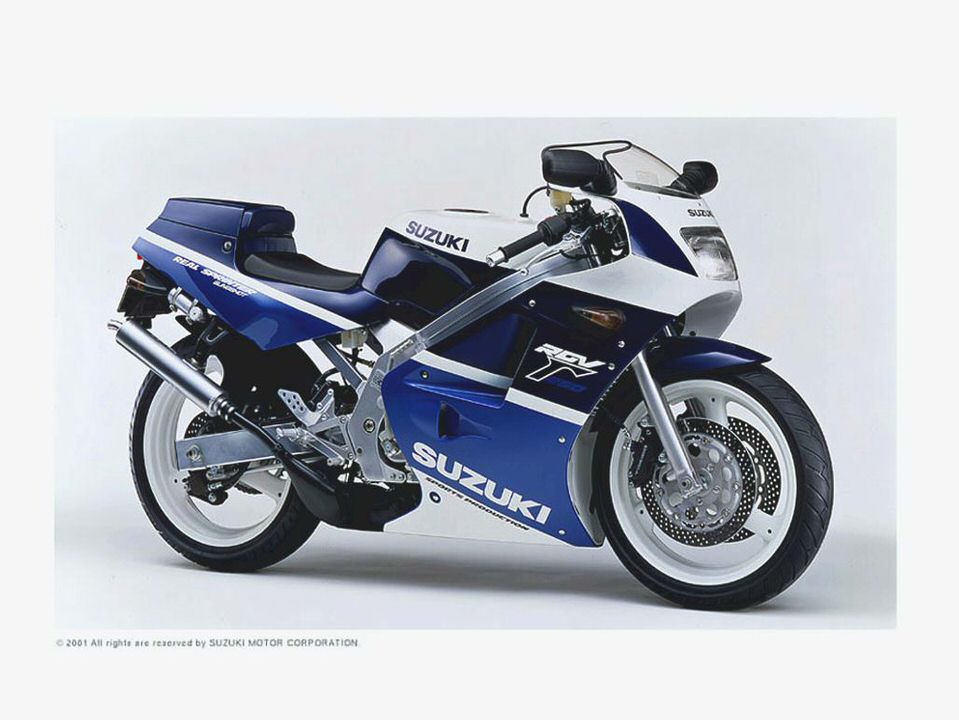
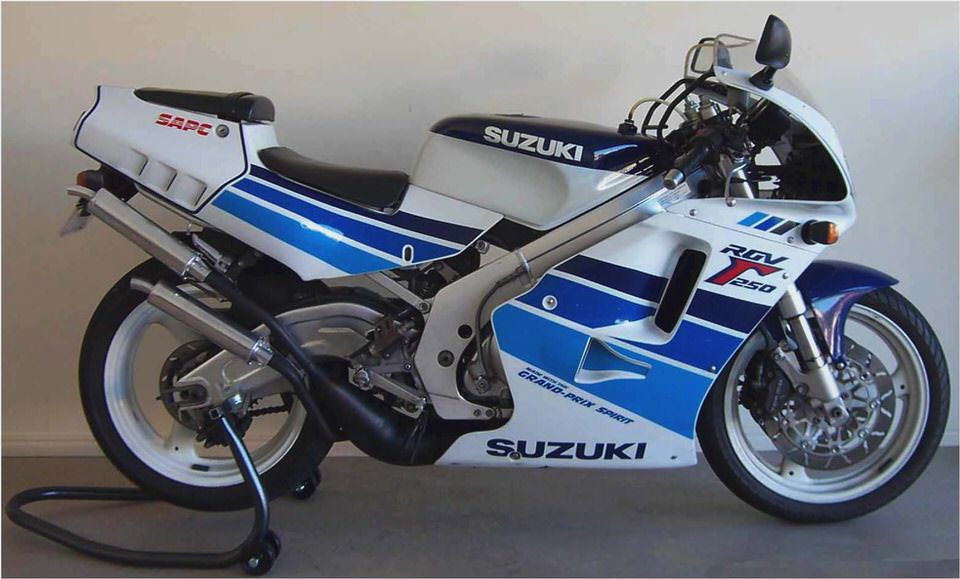
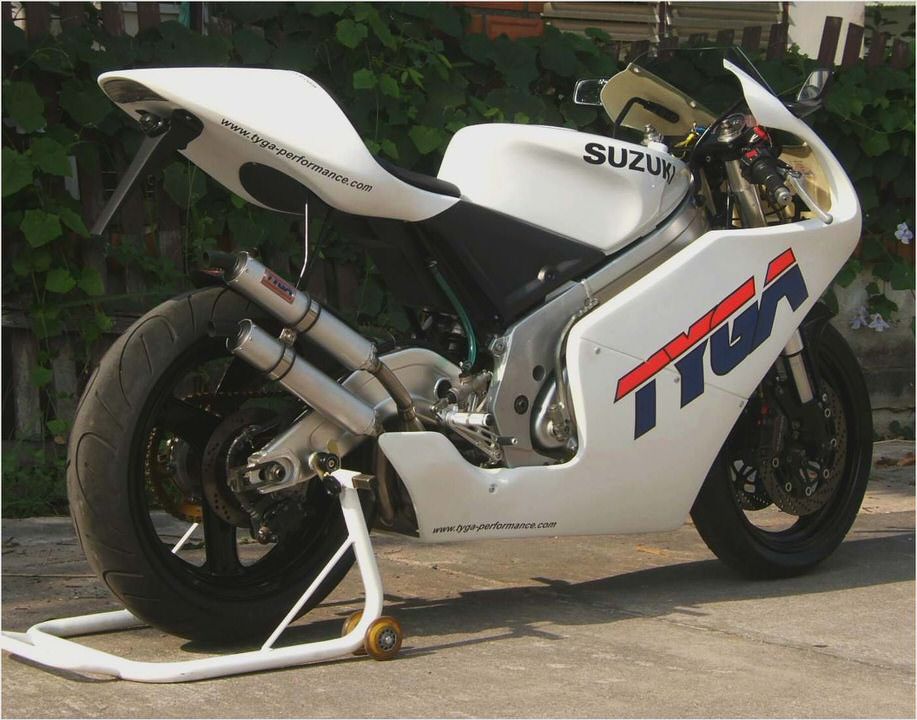
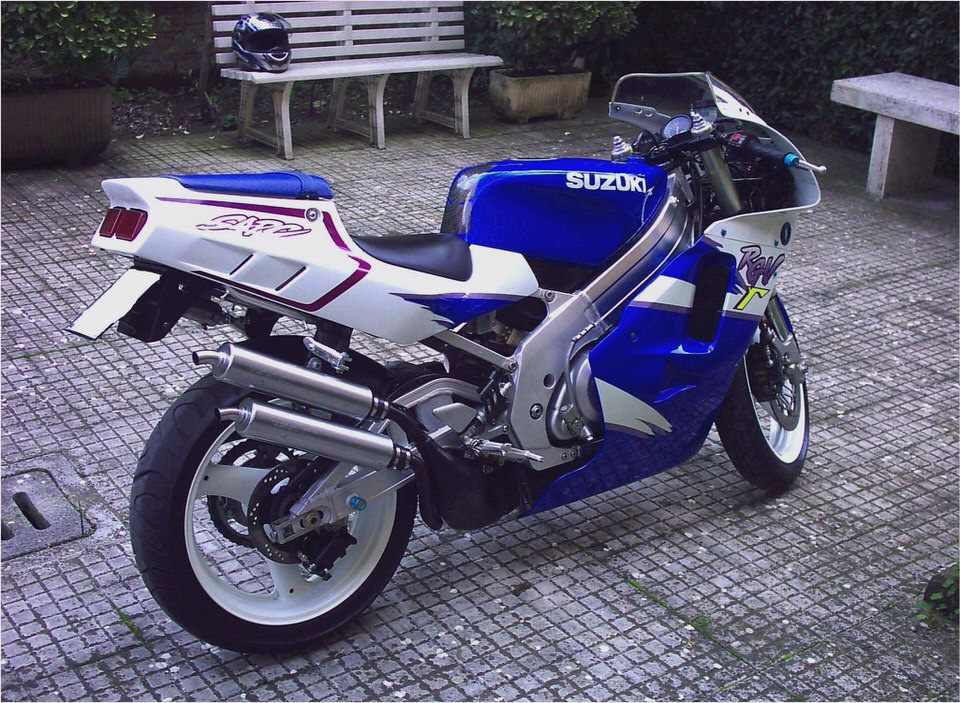
- DR 125 SE queries – DR – ThumperTalk
- Suzuki Scooter Index Motor Scooter Guide
- First Ride: 2013 Suzuki Burgman 650 ABS – Cycle News
- Suzuki Rm 250 Owners Guide Books
- Suzuki’s fuel cell scooter gets mass-production approval – but should…
